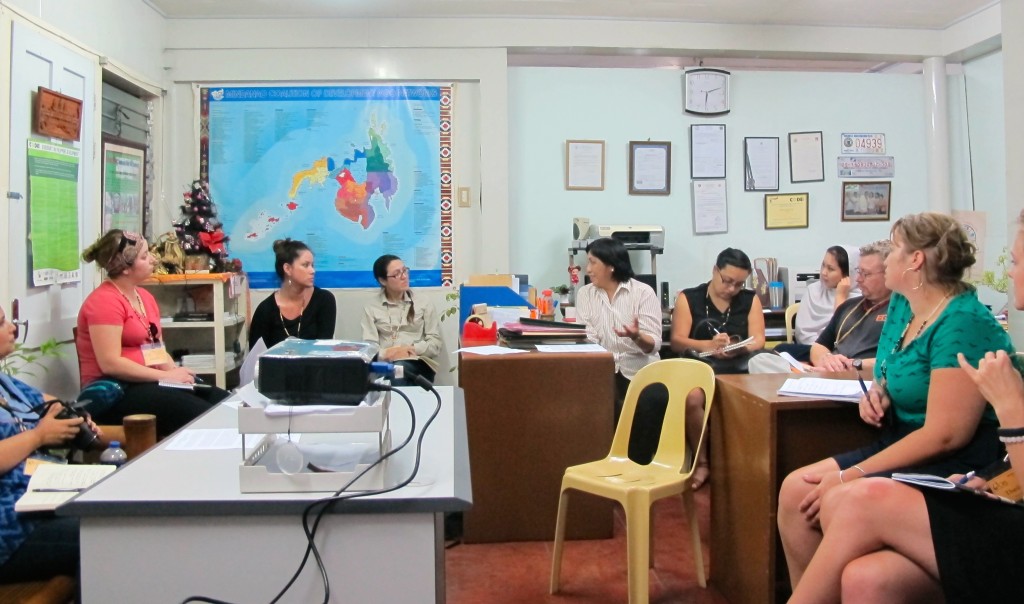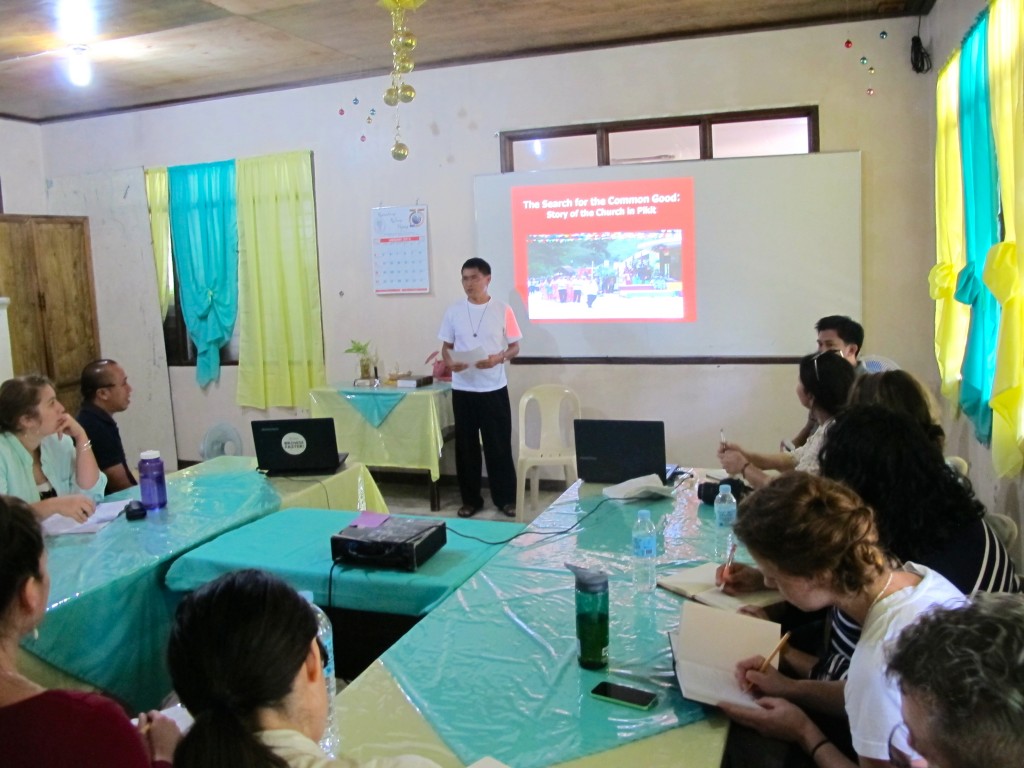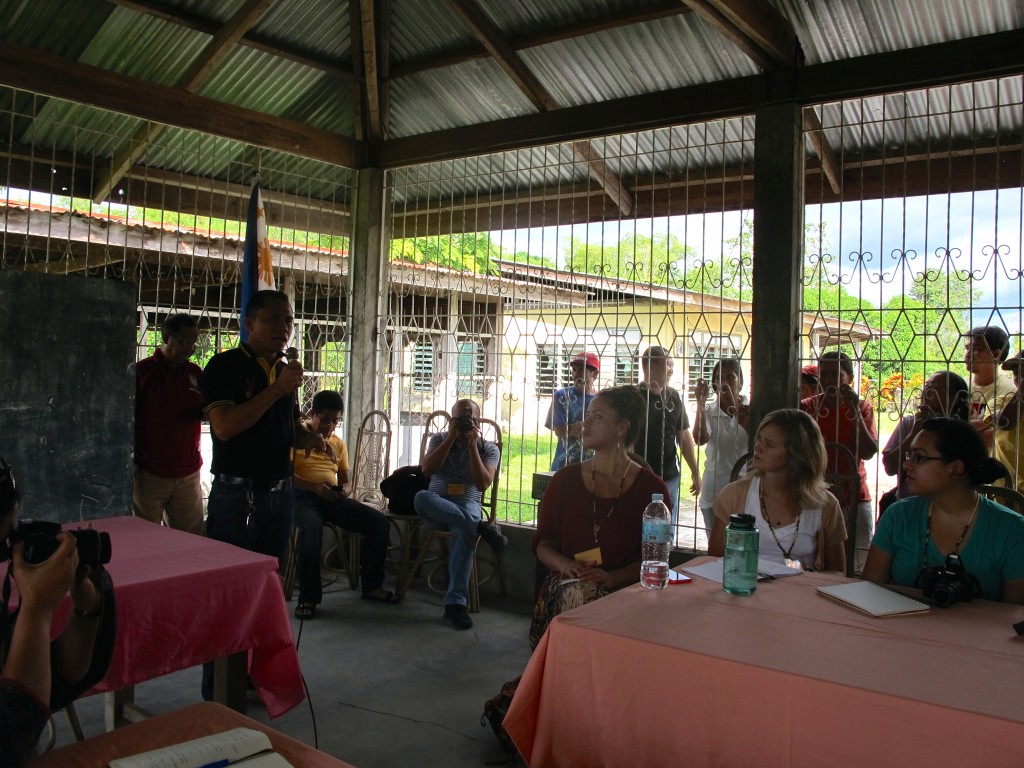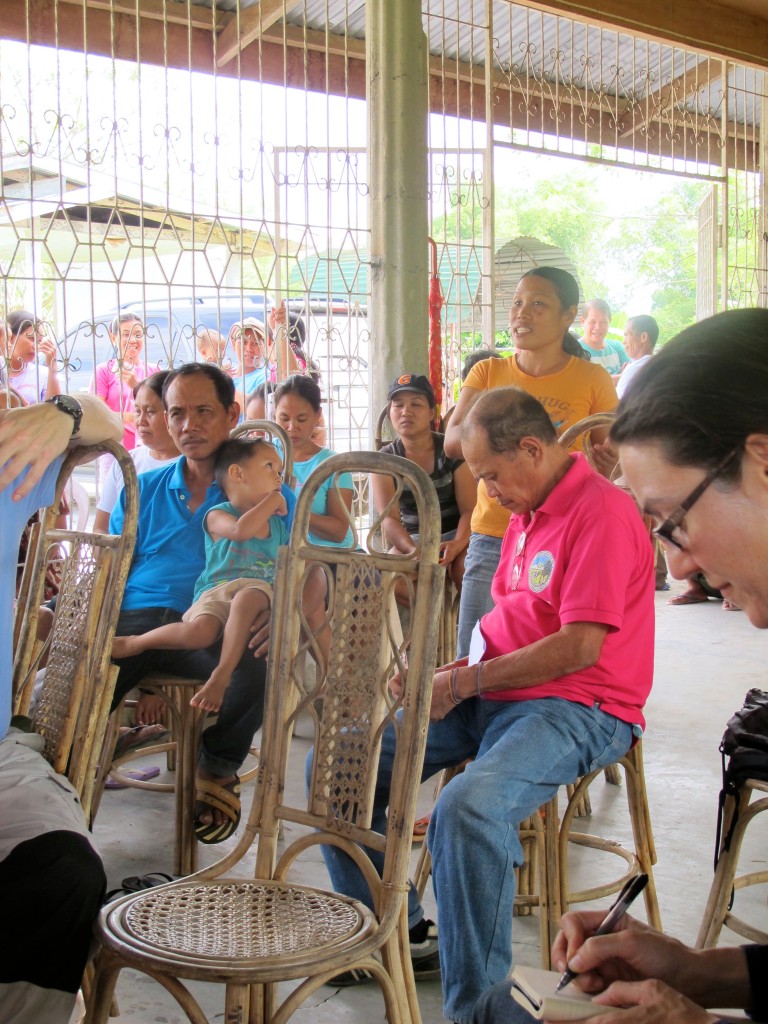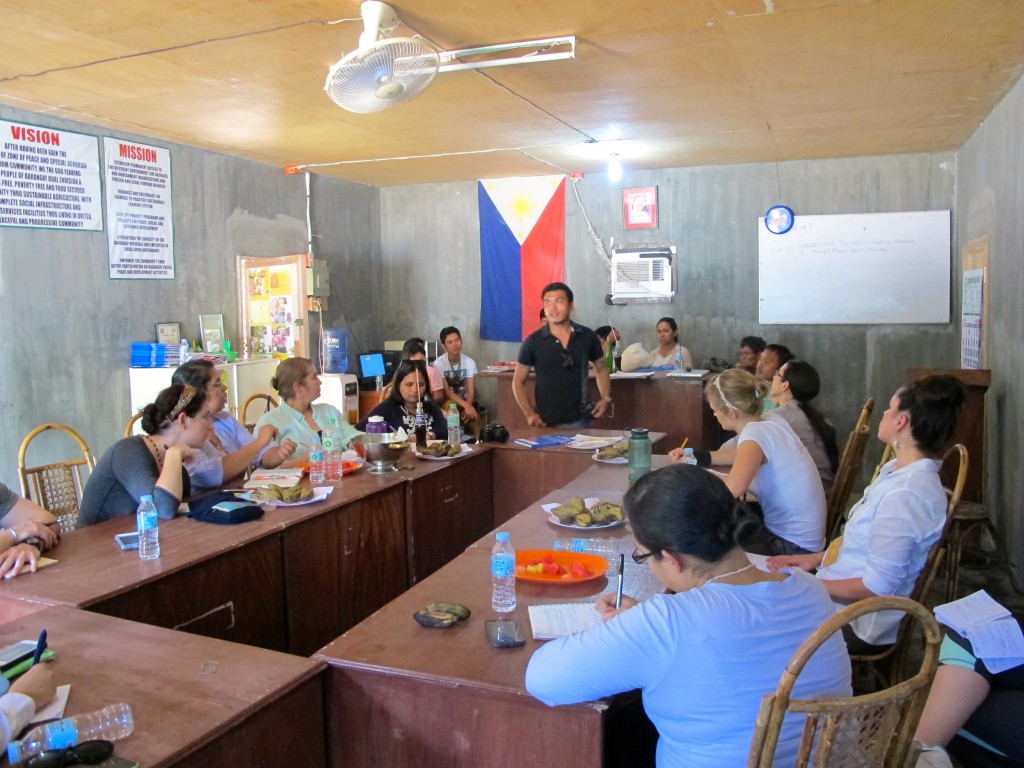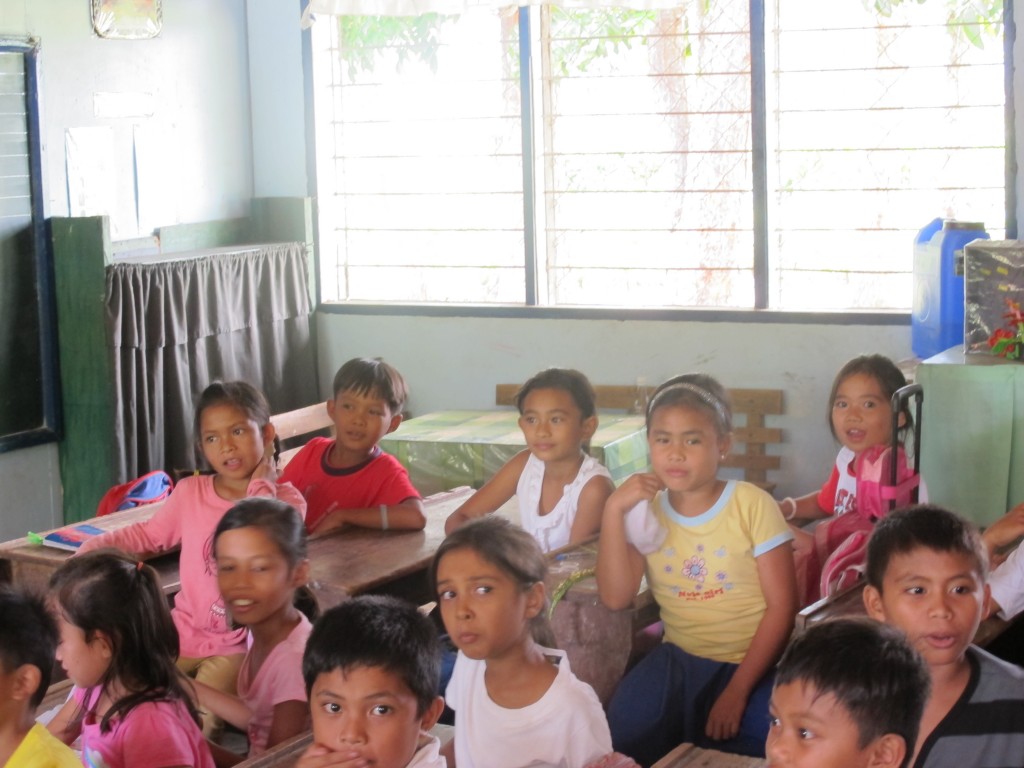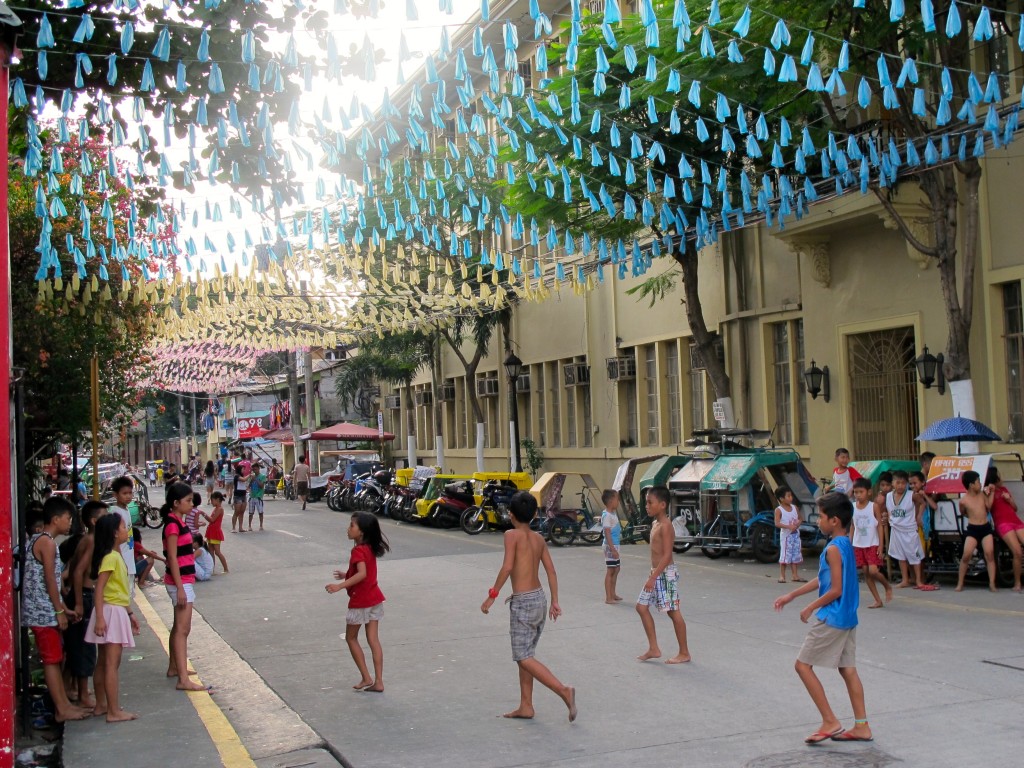Written 1/12/15
“Process is as important as content,” Father Bert reminded us yesterday. To say that this fieldwork program is unique is to force extraction of the full meaning of the word – rare, distinct, specific, containing differentiated features from anything else, anywhere – from any other academic trip in any location. I want to write about our research process here because now is such an incredibly unique time to be experiencing and investigating peacebuilding in Mindanao.
Our research process quickly reached a rhythm within two or three days in the field. Professor Iyer initiates the visit with introductions, our interest and purpose in Mindanao: to investigate and understand the local approaches and challenges to peacebuilding in the context of the conflict in Mindanao. We are her fifth cohort – previously she has facilitated student fieldwork in Cambodia, Nepal, India, and Sierra Leone – to study peacebuilding, development, and conflict resolution in areas recovering from violent war. Our hosts – whether grassroots NGOs, development agencies, peacebuilding advocates, political or religious leaders – provide a general overview of their mission and activities, followed by an open forum for questions.
Having the space and private attention to ask our questions is truly a privilege. This feeling is encouraged by our generous and unfailing Filipino hospitality. We are served cold water, juice, coffee, fresh fruit, or snacks as our thoughts fly, questions stream along, and answers are passed around the room. Even under the discomfort of a tense question, people do their best to give us a satisfactory response. To the community organizers at the development coalition center, “What are your greatest challenges to gaining participation in your programs?” I ask. They reply that it is difficult. When there is a newly funded livelihood project promising an income and opportunity, people will come and attend the trainings. But regular attendance and participation can be costly, and the pressures of poverty do not allow some people to get involved.
As the days go on, our radar becomes more attuned to nonverbal communication, to the power dynamics in the room and how the perspectives are incentivized and shaped by the political forces of development. Professor Iyer provides key insights into unwinding these complex connections. The group learning process is endlessly fascinating – with each passing hour, we absorb new details, our minds our changed, and new themes become our priority. As though we are under a waterfall of puzzle pieces, scrambling to collect and make sense of them together.
Decades of struggle and violence have plagued the lives of Mindanaoans on varying scales and intensities. At one time, the Indigenous People were the victims of war and oppression, in another, the Moros, the Christians or the settlers. There is the feeling that all have suffered in this conflict. Most acknowledge that “others” (those of different clans, ethnicities, or religious identities) have also suffered unnecessarily in the long conflict in Mindanao, and deserve a say in the peace process. Many times there is no clear line between who are the victims and who are the perpetrators.
Now, the passage of the Bangsamoro Basic Law is on the horizon. Long arduous months of negotiation between the Philippine National Government and the MILF – along with intensive community advocacy, inter and intra-faith dialogue, and public consultations – is culminating this year. The culture and rhetoric of conflict and peacebuilding is built into the culture in a way that is potent and persistent. Implementation is unclear yet hopes are high.
We leave when it is time, with many, many thank yous and handshakes. We have been connected for this brief time with people and their communities by the hard work, communication and logistics of the contacts of Professor Iyer and Catholic Relief Services. We have shared and gained great insights from them, another session amid countless other discussions of conflict and peacebuilding that have taken place all over the country. Romanticism aside, I hope that our group’s interests and line of questioning have brought new perspectives to light, and that our meeting has awakened new ideas in our hosts as well. Ideally it has been a mutual learning experience. We leave with a promise to share this rich information with wider audiences within our own networks and through MIIS, to tell their story, confront misinformation, and widen support for their goals and lasting peace.
It amazes me how our learning is progressing with geography. Days from Davao, the perspective from each community meeting have painted a different picture of what is peacebuilding. This approach is the building blocks of our research methodology. At this point in fieldwork, listening and recording are the most important skills. Upon reaching our last urban destination in Central Mindanao, we are somewhat familiar with the key actors, desires, history and struggles of the central stakeholders in the conflict. Parenthetically, we are as knowledgeable as much as possible after merely 7 days in the field. Though by no means familiar, we feel acquainted with the complex roots of the conflict. But there are still so many more questions to ask.

